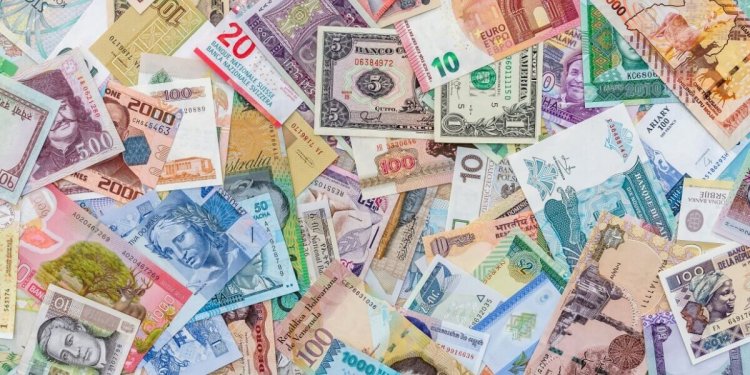Beyond Borders Exploring the World's Diverse Currencies
The world is a rich tapestry of cultures, each with its unique traditions, languages, and symbols. One of the most tangible expressions of a country's identity and heritage is its currency. Beyond mere tools for trade, currencies embody national pride, historical milestones, and cultural narratives. In this exploration of the world's diverse currencies, we journey beyond borders to discover the stories etched into the coins and banknotes that circulate across continents.
Share this Post to earn Money ( Upto ₹100 per 1000 Views )

The world is a rich tapestry of cultures, each with its unique traditions, languages, and symbols. One of the most tangible expressions of a country's identity and heritage is its currency. Beyond mere tools for trade, currencies embody national pride, historical milestones, and cultural narratives. In this exploration of the world's diverse currencies, we journey beyond borders to discover the stories etched into the coins and banknotes that circulate across continents.
1. The Art of Currency Design
Currencies often feature intricate designs that reflect the cultural heritage and natural beauty of their issuing countries. The Australian Dollar, for instance, showcases the country's iconic wildlife, including kangaroos and koalas, on its vibrant polymer notes. Similarly, the Mexican Peso celebrates the rich history of Mexico with images of Aztec temples and revolutionary heroes.
The design of currency is not merely artistic; it also serves as a symbol of a nation's values and aspirations. For example, the South African Rand prominently features Nelson Mandela, symbolizing the country's journey toward equality and justice. Meanwhile, the Euro, used by 19 European Union countries, features bridges and windows, symbolizing openness and cooperation across the continent.
2. Historical Narratives on Currency
Currency often carries with it the weight of history. The British Pound Sterling, one of the oldest currencies still in use, tells the tale of the British Empire's influence. Its design has evolved over centuries, reflecting the nation's changing identity and values.
In contrast, the Zimbabwean Dollar became infamous for hyperinflation in the early 2000s, symbolizing economic instability and the challenges faced by the country. This period saw banknotes with denominations reaching into the trillions, underscoring the severe economic crises.
3. Economic Indicators and Currency Strength
The strength of a currency can be an indicator of a country's economic health and stability. The U.S. Dollar and Euro are considered strong currencies, widely used in international trade and held as reserve currencies by central banks worldwide. This status is a testament to the economic power and stability of the United States and the Eurozone.
In contrast, some currencies, like the Venezuelan Bolivar, have faced severe devaluation, reflecting economic turmoil. Such currencies often struggle with issues like hyperinflation, which can erode public trust and purchasing power.
4. The Role of Currency in National Identity
Currencies are a source of national pride and identity. They often feature important cultural symbols, historical figures, and landmarks. For example, the Indian Rupee highlights India's diverse heritage with images of Gandhi, the country's father of independence, and landmarks like the Sanchi Stupa.
In many countries, currency redesigns are significant events that can stir public interest and debate. These changes are often seen as opportunities to celebrate a nation's achievements, commemorate significant events, or reflect societal progress.
5. The Future of Currency
As the world becomes increasingly digital, the future of physical currency is a topic of much speculation. Digital currencies and cryptocurrencies are gaining popularity, offering new forms of money that transcend traditional borders and governmental control. However, physical currency remains an important aspect of daily life for billions of people worldwide, particularly in regions with less digital infrastructure.
The transition to digital forms of currency raises questions about accessibility, privacy, and the preservation of cultural identity. As we move towards a cashless society, it is essential to consider how these changes will impact the way we connect with our history and culture through money.
Conclusion
Currencies are more than just a medium of exchange; they are cultural artifacts that provide insight into the values, history, and identity of nations. As we explore the diverse currencies of the world, we gain a deeper understanding of the interconnectedness of global economies and the rich tapestry of human civilization. Whether in the form of coins, banknotes, or digital assets, currency remains a powerful symbol of a nation's story, resonating with pride, resilience, and aspiration.







